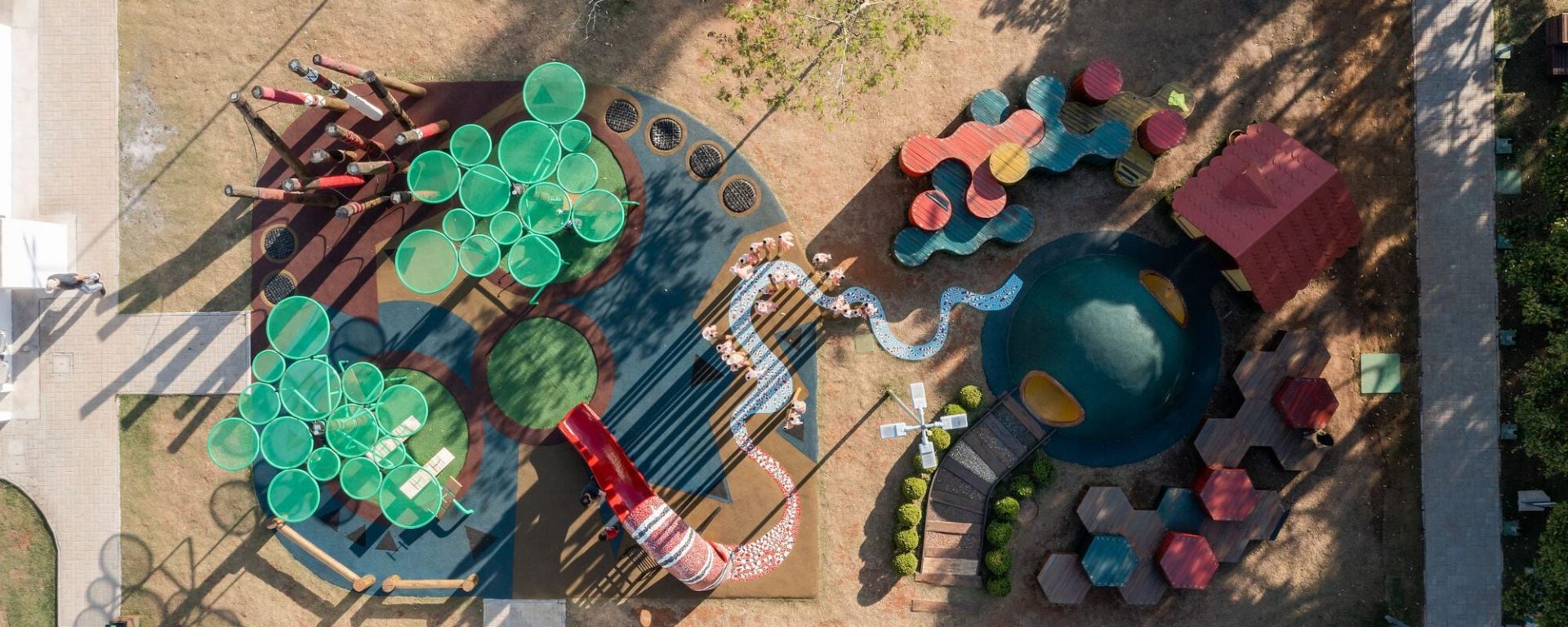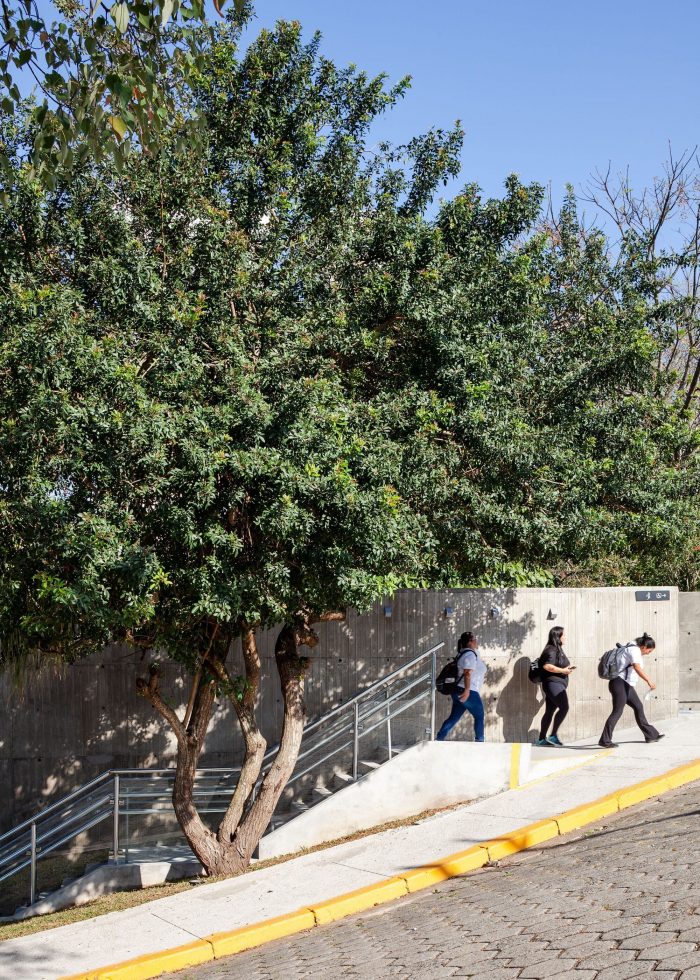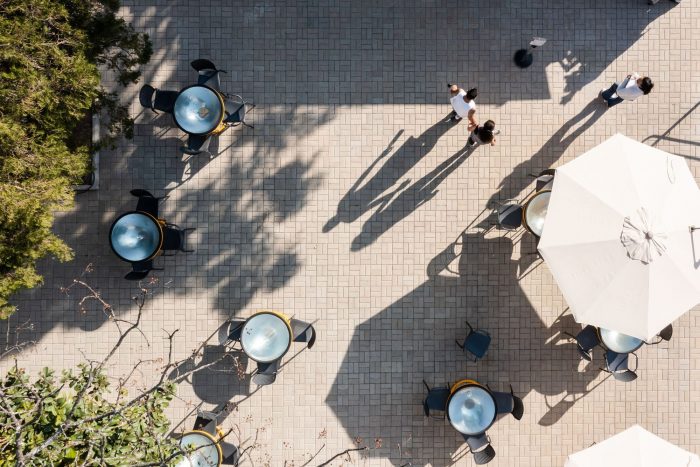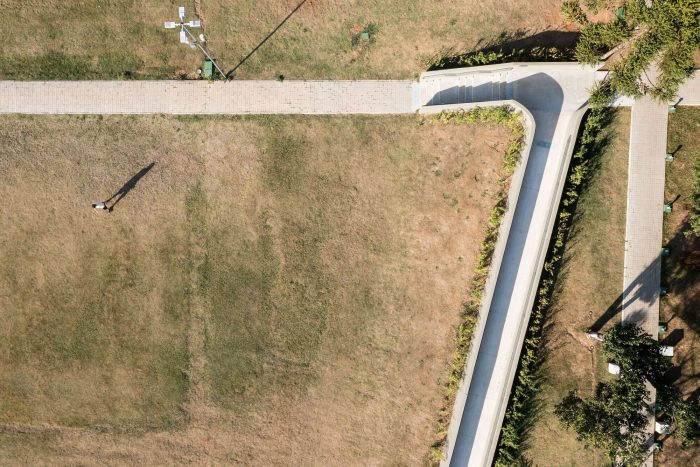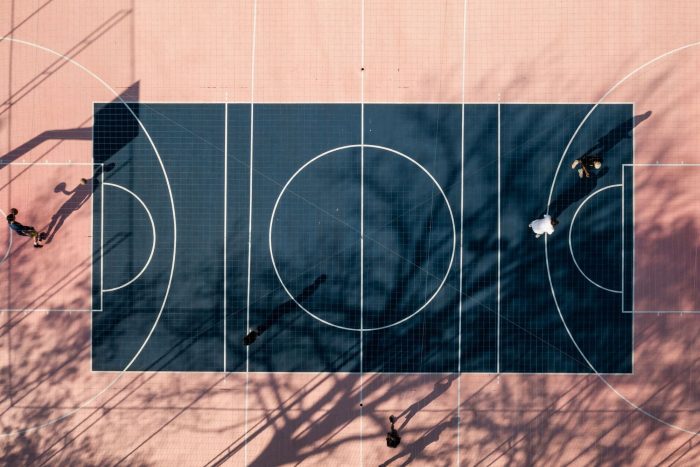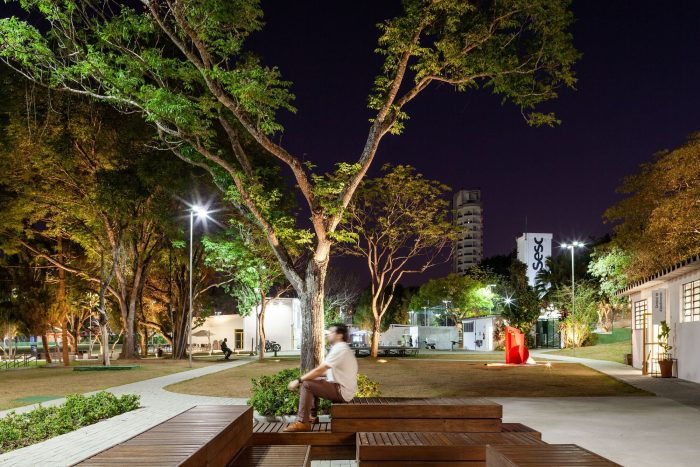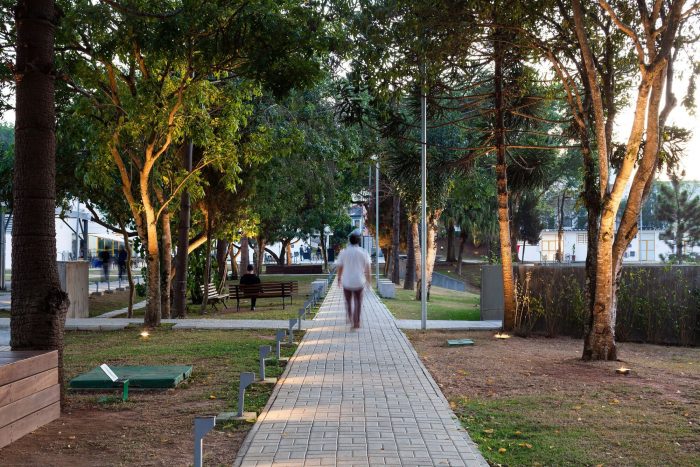项目。这是Sesc在Mogi das Cruzes市的一块中央土地上实施的一个临时单位,面积接近30000平方米。通过这种方式,塞斯克可以在短期内向该地区提供服务,直到该单位的最终部署。场地上的所有建筑和大部分现有的基础设施都被重新利用。这种再利用的想法指导并构思了拟议的建筑和景观项目。
Project. This is the implementation of a temporary unit of Sesc in the city of Mogi das Cruzes in a central land with an area close to 30,000 m². In this way, Sesc can offer its services to the region in a short period of time until the definitive deployment of the unit. All the buildings and much of the existing infrastructure on the site were reused. This idea of reuse guided and conceptualized the proposed architectural and landscaping project.
概念化。我们理解Sesc Mogi das Cruzes的项目,虽然是临时性的,但也是对现有物体的干预。通过这种方式,我们寻求一种细节的建筑,玩味的规模和缝制。缝制的东西指的是一种 “修正 “的想法,但最终接受了物体的新状态。人们开始接受一个活生生的物体,这就是缝制的最大好处。我们试图留下现有的标记,作为一个疤痕,不是在其意义上的痛苦或不好的东西,而是在意识的意义上。另外,新的插入物建在墙壁上,存在感被揭示出来,从而使建筑物适合于对其痕迹的阅读。
Conceptualization. We understand the project for the Sesc Mogi das Cruzes, although temporary, as an intervention in an existing object, but also present. In this way, we seek an architecture of detail, playful scale, and sewing. Sewing something refers to a thought of “correction”, but that ends up accepting a new state of objects. One begins to accept a lived object and this is the greatest benefit of sewing. We try to leave the mark of the existing, as a scar, not in its sense of pain or something bad, but in the sense of being aware. Also, new inserts built on walls, and presences are revealed, thus making buildings amenable to a reading of their marks.
有必要理解的是,Socorro体育中心,现在是Sesc Mogi das Cruzes的新家,在这个城市的结构中已经有了存在感,因此有了记忆。因此,该项目是景观回收的隐喻的一部分,由于人类需要培养身体和心灵,符合塞斯克的目标,即促进社会教育行动,为工人、商品贸易、服务和旅游、他们的家庭和社区的社会福利和生活质量作出贡献,以建立一个公平和民主的社会。
It is necessary to understand that the Socorro sports center, now the new home of Sesc Mogi das Cruzes, already has a presence and thus a memory, in the fabric of the city. So the project is part of a metaphor for the recycling of the landscape, due to a human need to cultivate body and mind, in line with the objective of sesc to promote socio-educational actions that contribute to the social well-being and quality of life of workers, trade in goods, services and tourism, their families and the community, to a fair and democratic society.
可回收的。在当代思想中,我们接受日常生活的潜力,寻求促进简单的解决方案和在社区的巨大影响,引发新的伦理和简单的美学。因此,该项目通过插入新的用途和意义来利用现有的建筑。使用的概念来自于拉丁文PROVECTUS,”被推动,向前推进”,以及PROVEHERE,”行走,向前携带,运输”。 也就是说,该项目提出了对现有结构的进化使用。我们建议,所有从破墙中产生的 “卡利卡 “被用于光滑水泥的新地板,也被用于创造家具(立方体和长椅),以植入土地的不同位置。足球场上的旧灯被重新使用在咖啡广场的桌子上。
The recyclable. We accept, within contemporary thought, a potential of everyday life that seeks to promote simple solutions and great impact in the community, triggering new ethics and aesthetics of simplicity. Thus, the project takes advantage of existing constructions by inserting new uses and meanings. The concept of use comes from the Latin PROVECTUS, “pushed, propelled forward”, and from PROVEHERE, “to walk, to carry forward, to transport”. That is, the project proposes an evolutionary use of existing constructions. We propose that all the “caliça” generated from the breaking of walls be used on the basis of new floors in smoothed cement and also in the creation of furniture (cubes and chaise longues) to be implanted in the land in a range of different locations. The old lamps present on the football field were reused on tables for the coffee square.
场地占用。场地的占用是从两条垂直的轴线开始的,这条轴线组织了流动和项目。在东西方向的第一条轴线我们称之为艺术轴线。这连接着两个门厅。在服务前不久,用户会看到一个可以自由灵活使用的到达广场。该轴线还连接着咖啡馆广场、多功能亭和儿童游乐场。在轴线的中间,我们提供了一个带有家具的座位/休闲区,利用了这里的景色和存在的广泛的造林。从这个轴线,可以移动到技术和艺术以及行政部门的空间。
Site occupation. The occupation of the site started from two perpendicular axes that organize the flows and programs. The first axis in the east/west direction we call the art axis. This connects the two gatehouses. Soon after the pre-service, the user will see an arrival square with free and flexible use. The axis also connects café square, multipurpose pavilion, and children’s play. In the middle of the shaft, we provided a seating/relaxation area with furniture taking advantage of the views of the place and the wide afforestation present. From this axis, it is possible to move to the space of technology and arts and administrative sector.
南北轴线由两条人行道组成,其中心是一个宽阔的绿色区域。这条轴线的起点是Av. Narcissus Yague Guimarães。在这个地方,我们把菜园插在一个日照充足的地方,靠近环境亭,旧屋顶用回收的覆盖物重新使用。在两条轴线的交汇处,我们提供了一个大型的开放区域,供舞蹈舞台使用,可以利用无草区来接待公众。穿过东/西轴线后,我们到达了旧足球场的水平。在这个地方,我们留下了一个区域,可以利用现有的看台部署一个可移动的舞台。我们还包括两个25×42米的足球场。
The north-south axis is composed of two strips of pavement with a wide green area in its center. This axis starts on Av. Narcissus Yague Guimarães. In this place, we insert the vegetable garden in an area of ample insolation, near the environmental kiosk, old roof reused with recycled cover. In the meeting of the two axes, we provided a large open area for use with a dance stage that can use the grass-free area to receive the public. After crossing the east/west axis we reached the level of the old football field. In this place, we leave an area for deployment of a removable stage taking advantage of the existing stands. We also included two football fields of 25×42 m.
建筑物。对于建筑物,我们提出的干预措施将带来视觉上的统一,而不需要大的干预。总的来说,建筑物得到了白色的油漆,烧过的水泥地面,更换了损坏的玻璃,新的天花板,屋顶清洁,以及新的电力、系统和液压网络。新的干预措施被 “标记 “出来,其余的只是被重新激活。因此,新的框架是带有黄色油漆的铸铁,而电气装置是明显的。该项目寻求以极低的成本进行活化,使其能够快速使用,利用回收使用、建筑、材料和历史的理念,从而创造出多元的、有趣的和功能性的意义。
Buildings. For the buildings, interventions were proposed that would bring visual unity without major interventions. Overall the buildings received white paint, burned cement floors, exchange of damaged glass, new ceilings, roof cleaning, and new electrical, system, and hydraulic networks. The new interventions are “marked” and the rest are only revitalized. Thus, the new frames are cast iron with yellow paint, and the electrical installations are apparent. The project seeks a revitalization with extremely low cost enabling its rapid use, using the idea of recycling uses, buildings, materials, and history, thus creating plural, playful and functional meanings.
 Architects: AP Arquitetos
Architects: AP Arquitetos
Area : 21528 ft²
Year : 2022
Photographs :Pedro Vannucchi
Manufacturers : Armstrong, Haiah Revestimentos , Isover, Plasprime, Portinari, Unistein
Lead Architect : André Prevedello
3d Model : Gustavo Becari
Development : Alessandra Montani
Electric And Hydraulic : Floriana Oliveira Matta – Laga Engenharia
Visual Communication : André Prevedello – AP Arquitetos
Landscaping : André Prevedello – AP Arquitetos
Tree Registration : Luciana Kolm – Medral
Planialtimetric Survey : Henrique Skowronski Neto – Topografiacom
Legal Feasibility : Paola Macuco – BMeD
Environmental Assessment Survey : Diego Andrighetti – D-GEO
Environmental Comfort : André Prevedello – AP Arquitetos
Accessibility : André Prevedello – AP Arquitetos
City : Jardim Armenia
Country : Brazil

